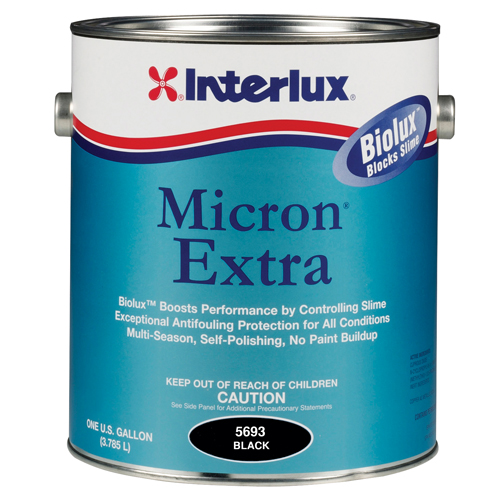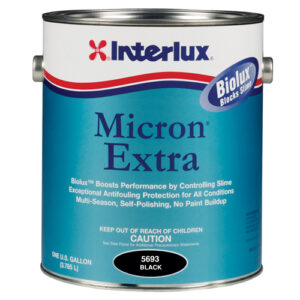
 You may have heard the term “bottom painting” when someone was talking about a boat, but not really know what it is, or why it may be necessary. Here’s a primer (no pun intended) on what bottom paint is all about.
You may have heard the term “bottom painting” when someone was talking about a boat, but not really know what it is, or why it may be necessary. Here’s a primer (no pun intended) on what bottom paint is all about.
What is Bottom Paint?
Bottom paint refers to a category of paints designed specifically to paint the bottom of boat hulls on top of gel coat or other paint, for boats that will be stored in the water. Bottom paint is also – more technically – referred to as “antifouling” paint.
Why do Boat Hulls need Regular Paint Jobs?
When boats remain on the water for more than a week at a stretch, there is a strong possibility that marine growth, such as slime, algae, or barnacles can seriously damage the underside of the boat, and hamper its mechanical performance. To prevent such growth from propagating, frequently used boats, especially, speed boats, have to be regularly painted on the underside with toxic paints. Some non-toxic paints with Teflon or silicone in them can also create hard, clean surfaces, which rarely attract marine growth.
Seasoned sailors generally include this bottom paint job in the spring maintenance schedule before launching the boat in the season. However, speed-boat, yacht, or regular boat owners cannot afford to wait for spring every year, because by then their boats will be completely damaged with water-induced, foul growths and eventually destroy the mechanical parts of the boat. So it is imperative boat owners learn to read the tell-tale signs of marine growth on the underside of their floating toys or working platforms or just boats.
If you, as a boat owner, cannot decide whether to paint the bottom of your boat or not, then get your machine inspected for marine growth on the underside and around the hull. If an expert recommends a bottom paint job, then get the job done as quickly as possible to protect your investment!
How to select appropriate paints for boat hulls
With literally hundreds of paint products for boats flooding the market today, it is very confusing for you, the boat owner, to select the most appropriate and effective paint for a particular type of boat:
Copper coated paints: Traditionally, paints manufactured for bottoms of boats came with a copper compound, often sealed in a separate pouch—that had to be mixed with the paint, and the resulting mixture had to be kept upside down (in suspension) for 24 hours before use. Some environmental regulations have necessitated a ban on that type of paints, although copper is still to be found in paints meant for bottoms of boats.
Vinyl paints: This type of paint is harder but has less friction than epoxy paint. This type of paint can be more effective than thin-film paints.
Thin-film paints: This type of paint may be used for boats on fresh water, where marine growth is less likely to propagate on a hard Teflon surface.
Epoxy paints: This is a hard paint, most suitable for boats scheduled to remain in water for at least a year or more. This type of paint does not easily peel off; so the bottom can be cleaned while in water. As the copper content erodes after some time, this paint requires several coats, which again may require stripping.
Ablative paint: This type of paint eventually erodes, but remains effective as long as it is around. This type of paint is most appropriate for boats that remain dry for a big part of the year. Water-based ablative paints, with less foul smell and less mess-ups, are now available in the market.
It is also a stellar idea to discuss the performance of boat hull paints in different types of temperature and water conditions with experienced sailors. The general rule of thumb is a coat of ablative paint works better over a previous coat of epoxy paint, but the reverse is not true. Check out the manufacturer’s guidelines, and talk to store owners before making a purchase decision. If you decide to buy the paint product online, it may be easier for you to attain a lot of reviews on paint products meant for boat hulls.
Handling painting materials: Quick tips
Both before and during the boat bottom painting job, you have to take adequate precaution, and the proper measures to protect yourself, and to protect the environment from the negative impact of toxic materials. So here are a few quick suggestions for handling the painting materials:
- If a water-based ablative paint is used, then power-wash, and wipe the hull just before painting. This will
help the paint to level on the surface of the boat. - Use a Xylene based solvent to wipe the hull, as Xylene does not quickly evaporate and cleans better than acetone.
- Use a wet sanding technique instead of dry sanding to sand the bottom of the boat. Wipe down with Xylene and you’re ready to paint.
- Use goggles and a respirator before and during painting. Remember that boat underside paint is toxic, and may be carcinogenic.
- Use a paint can-opener to open paint.
- If using a copper-based paint like Pettit SR-21, pour just enough paint for two coats in a mixing pale without a liner. The rest of the paint can be left covered as it may evaporate.
- If using power sander with coarse sanding discs, then attach a vacuum bag to the sander, and place a tarpaulin sheet under the boat while sanding.
- Invert bottom paint can for 24 hours prior to use. The copper that settles as a heavy sludge at the bottom of paint can needs to be dissolved back into the paint solution.
- Pour the paint over the front of the paint can to preserve the paint application instructions provided on the back side.
- Use disposable paint-roller covers, which can be thrown away once the job is done.
Handling the paint job
- These are the usual steps involved in painting the bottom of a boat:
- Power washing the bottom of the boat, specifically the hull
- Sanding the surface with 80-100 grit sandpaper, to peel off excess paint from last coat
- Cleaning the surface with some cleaning solvent
- Applying the first coat of paint on the underside of boat
- Waiting for the coat of paint to dry—as per manufacturer’s guidelines
- Applying second coat of paint if necessary
Most paints manufactured for boat hulls take about 10 to 30 minutes to dry enough for a second coat.
I hope this has been helpful in understanding bottom paint and how to apply it. If you have any additional suggestions I would love to hear about them – just leave me a comment below.

Leave a Reply